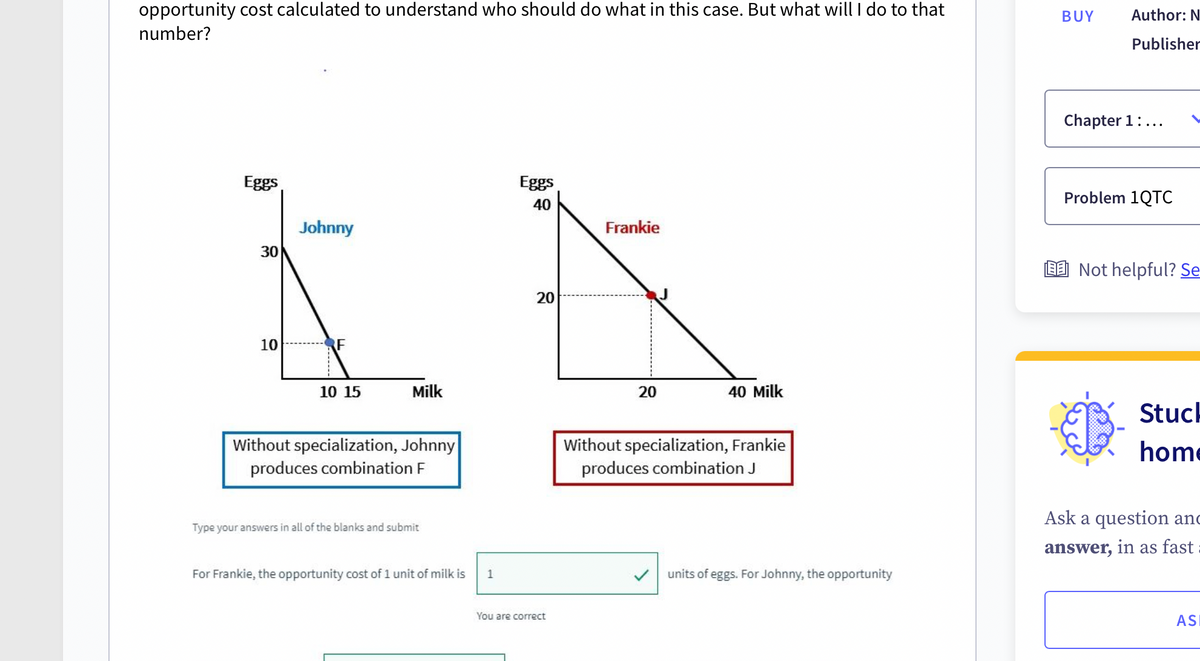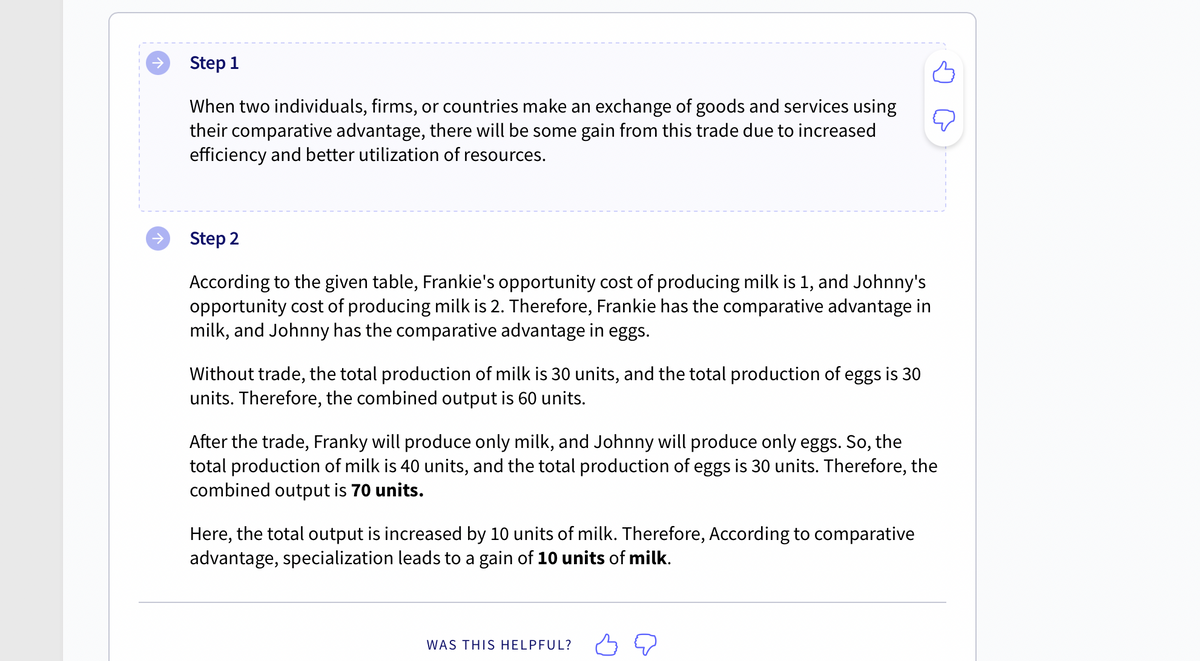Chapter3: Scarcity, Trade-offs, And Production Possibilities
Section: Chapter Questions
Problem 6P
Related questions
Question
100%
Hi could you explain why the total output of milk without specialization is 30?

Transcribed Image Text:opportunity cost calculated to understand who should do what in this case. But what will I do to that
number?
Eggs
Johnny
30
K
10
F
10 15
Milk
Without specialization, Johnny
produces combination F
Type your answers in all of the blanks and submit
For Frankie, the opportunity cost of 1 unit of milk is
1
Eggs
40
20
You are correct
Frankie
20
40 Milk
Without specialization, Frankie
produces combination J
units of eggs. For Johnny, the opportunity
BUY
Author: N
Publisher
Chapter 1: ...
Problem 1QTC
Not helpful? Se
Stuck
hom
Ask a question anc
answer, in as fast
AS

Transcribed Image Text:Step 1
When two individuals, firms, or countries make an exchange of goods and services using
their comparative advantage, there will be some gain from this trade due to increased
efficiency and better utilization of resources.
Step 2
According to the given table, Frankie's opportunity cost of producing milk is 1, and Johnny's
opportunity cost of producing milk is 2. Therefore, Frankie has the comparative advantage in
milk, and Johnny has the comparative advantage in eggs.
Without trade, the total production of milk is 30 units, and the total production of eggs is 30
units. Therefore, the combined output is 60 units.
After the trade, Franky will produce only milk, and Johnny will produce only eggs. So, the
total production of milk is 40 units, and the total production of eggs is 30 units. Therefore, the
combined output is 70 units.
Here, the total output is increased by 10 units of milk. Therefore, According to comparative
advantage, specialization leads to a gain of 10 units of milk.
WAS THIS HELPFUL?
Expert Solution
This question has been solved!
Explore an expertly crafted, step-by-step solution for a thorough understanding of key concepts.
This is a popular solution!
Trending now
This is a popular solution!
Step by step
Solved in 2 steps

Knowledge Booster
Learn more about
Need a deep-dive on the concept behind this application? Look no further. Learn more about this topic, economics and related others by exploring similar questions and additional content below.Recommended textbooks for you

Exploring Economics
Economics
ISBN:
9781544336329
Author:
Robert L. Sexton
Publisher:
SAGE Publications, Inc


Brief Principles of Macroeconomics (MindTap Cours…
Economics
ISBN:
9781337091985
Author:
N. Gregory Mankiw
Publisher:
Cengage Learning

Exploring Economics
Economics
ISBN:
9781544336329
Author:
Robert L. Sexton
Publisher:
SAGE Publications, Inc


Brief Principles of Macroeconomics (MindTap Cours…
Economics
ISBN:
9781337091985
Author:
N. Gregory Mankiw
Publisher:
Cengage Learning
